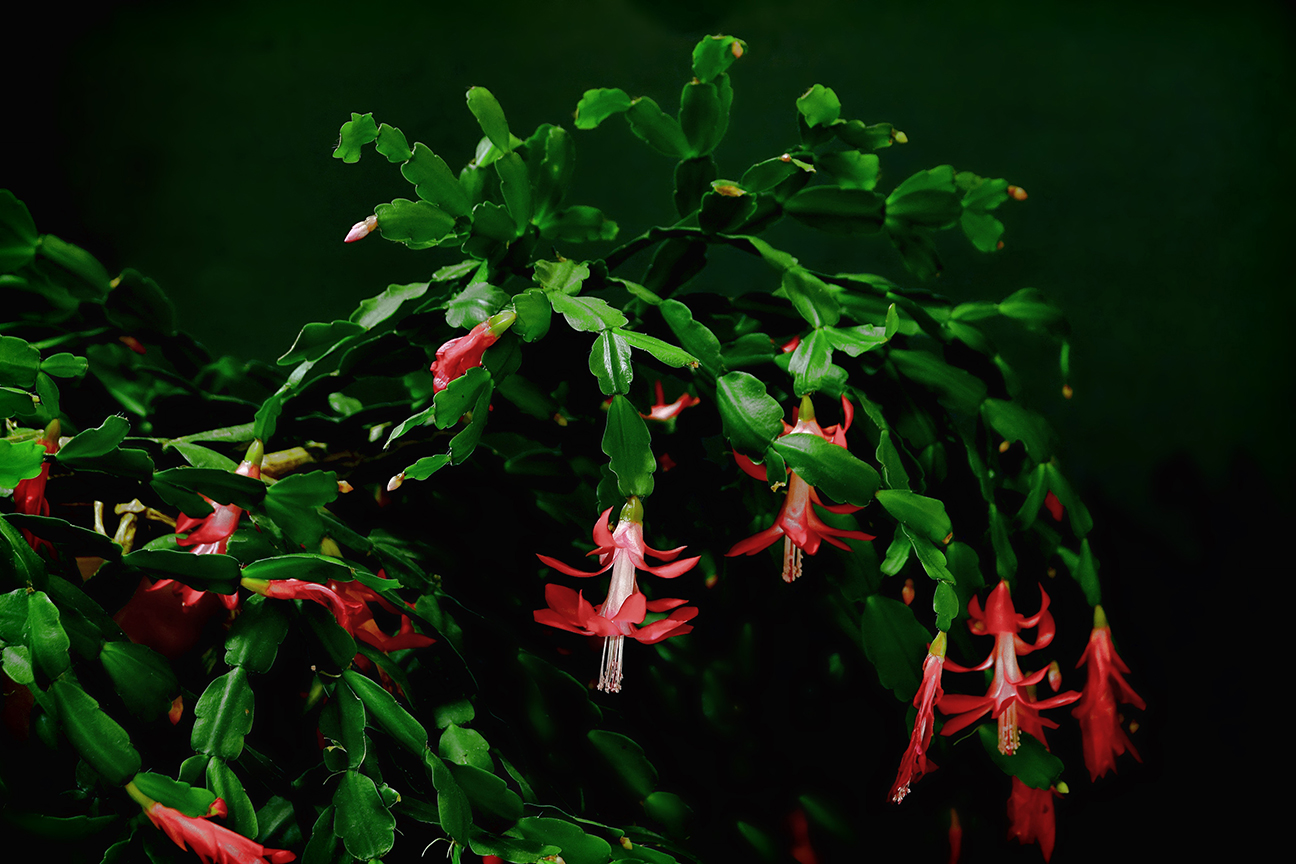
Keeping It Green
By Pamela A. Keene | Photography courtesy of Mississippi State University Extension, Pixabay, Pamela A. Keene
Plants used for holiday decorations provide colorful accents and some may even live on as houseplants and in the garden.
Holiday houseplants add another dimension to the season, but what do you do with those poinsettias, paperwhite narcissus, amaryllis, and Christmas cacti once they’ve bloomed?
“Many people these days are using live plants instead of cut floral arrangements to augment their Christmas décor, and that’s wise,” says James M. DelPrince, horticultural specialist with Mississippi State University Extension. “Living plants provide a much longer bloom display, and in some cases, they can become houseplants or even an addition to your landscape long after the holidays are over. Others, however, can be treated like annuals and simply tossed once their beauty has faded.”
Poinsettias, a true symbol of the holidays, now are grown in a full span of colors from creamy white and light pink to deep red, some with splashes of contrasting colors.
“The whole process of creating these holiday plants just in time for the season is fairly technical and growers have the process down pat,” DelPrince says. “However, for consumers, it’s very difficult to get them to rebloom, so it’s better to simply enjoy them indoors, then discard them out when they’ve faded. In reality, they are so affordable, it’s not worth the effort to keep them.”
It’s pretty much the same with paperwhite narcissus that expend all their stored-up energy in a flush of fragrant white blossoms. DelPrince says that once they’ve finished blooming, compost them along with the last of the wrapping paper.
“Bulbs, such as paperwhites and amaryllis, are powerhouses of energy,” he says.
Narcissus are grown to be ‘one-and-done’ and because they are so small, it’s not too likely they will rebloom.
“Amaryllis, on the other hand, can do very well as an outdoor plant, particularly in the warmer parts of the South,” he says. “As the blooms fade, carefully cut them off at bulb level. Leave the strappy green foliage and continue to keep them watered in strong indirect light and you may even coax out more blooms into January or early February.”
After several weeks, if they haven’t sent up more buds, cut back on watering and leave them in a bright sunny window to give the foliage time to store up energy for the next flowering. Once the leaves begin to turn brown, remove the bulbs from their containers and allow them to dry out for about four weeks.
“The best time to plant them outdoors is in mid- to late spring,” he says. “Find a sunny spot in your garden and replant the bulbs, leaving about the top one-fourth exposed. They aren’t too particular about the soil, and once they’ve been moved outdoors, you just let them do their thing.”
According to DelPrince, they will not bloom again that first summer, but once they’ve become established, they will revert to their normal blooming time around April of the next year and you’ll be rewarded with showy blooms year after year with very little effort.
Sometimes, the heavy blooms benefit from staking. Not only does this encourage longer stems, it also keeps the blossoms off the ground. They can be cut and brought inside for a nice summer bouquet.
Christmas cactus, and its cousins Thanksgiving and Easter cactus, have a reputation for becoming heritage plants. They’re often known to be covered with white, pink, orange, red or purple blossoms in the winter and into the spring depending on the variety.
“I’ve talked with people who tell me they inherited their massive Christmas cactus plants from their grandmothers,” DelPrince says. “They are fairly easy to care for and can become quite large.”
He recommends keeping the plants in a cool room that’s between 60 to 65 degrees, withholding water, and giving them a spot with natural light to replicate the 12 hours of light and 12 hours of darkness in the fall.
“This will encourage them to set buds, but once this starts, water them again, but just be careful not to overwater,” DelPrince says. “You’ll be rewarded with a colorful easy-care blooming plant each year.”
Christmas cacti are simple to propagate by taking cuttings of stem sections and planting them into loose soil in the spring and summer.
Two plants grown for their foliage are popular during the holidays: rosemary trimmed into a Christmas-tree shape and Norfolk Island Pines.
“The topiary rosemary plants can be moved outdoors into a spot with full sun and require very little water,” he says. “You can maintain the pyramidal shape through pruning, or simply let them grow on their own, and they appreciate the summer heat.”
Norfolk Island Pines are native to Australia and are adaptable to the same comfortable conditions as humans: temperatures in the 70s and bright sunlight.
“They do well in the summer on the porch and then can be brought back inside as the temperatures turn colder,” DelPrince says. “Just be aware that if you move houseplants indoors and outdoors you need to be mindful that they may bring in pests, insects and disease. Frankly, most of these seasonal houseplants are affordable enough to just start over with new ones as the holidays roll back around.”
extension.msstate.edu/publications/holiday-houseplants-0

